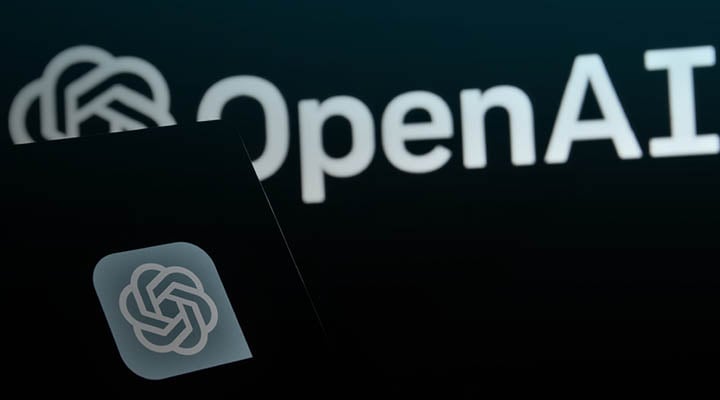In today's era of fast-paced digital progress, AI technology is becoming increasingly vital for businesses seeking innovation, operational efficiency, and a competitive advantage.
At the heart of this transformation lies the burgeoning trend of cloud-based Commodity AI and Generative AI. These innovative approaches are revolutionising how organisations leverage artificial intelligence, enabling them to harness its power without the need for substantial upfront investments in hardware and infrastructure. In the modern business landscape, these cutting-edge solutions pave the way for success.
Cloud-based Commodity AI offers pre-trained, on-demand solutions for tasks like Speech-To-Text, Text-To-Speech, Optical Character Recognition (OCR), blob detection, and image recognition. Their accessibility and ease of deployment suit individuals and organisations, regardless of technical expertise. This also includes advanced generative AI models, democratising access to AI innovations, like ChatGPT, known for generating human-like text on various topics.
In this blog, we will explore the remarkable benefits of these pioneering AI solutions, unlocking new possibilities for businesses and individuals alike. Join us as we delve into the potential of cloud-based Commodity AI and Generative AI.
Benefits
Accelerated Time-to-Value
Pretrained models and AI services, combined with an end-to-end suite tailored for use cases and managed infrastructure offered by cloud providers accelerate AI project deployment and implementation. This results in faster delivery of results and value, allowing organisations to reap the benefits of Generative and Commodity AI more quickly.
Cost-effectiveness
Cloud-based Commodity AI significantly reduces the initial cost barrier associated with AI adoption. With pay-as-you-go models and scalability, costs are aligned with usage. This allows organisations to leverage commodity AI without large upfront investments. However, it is essential to note that without effective management these costs can escalate quickly. To mitigate and optimise spending, strategies such as resource allocation monitoring, cost prediction, and usage pattern analysis should be integrated into the operational processes. This way, the true cost-effectiveness of cloud-based Commodity AI can be fully realised.
Safety and Security
While leveraging cloud technologies comes with robust safety and security measures, it’s important to understand the shared responsibility model that this entails. Cloud providers offer strong protection for the infrastructure that runs all the services offered in the Cloud. This is known as 'security of the cloud'. On the other hand, users bear the responsibility for the data they input and the way they use these services, commonly referred to as 'security in the cloud'.
So, even though cloud-based Commodity AI solutions provide out-of-the-box safety features and data protection measures that ensure the integrity and availability of AI models, they cannot fully prevent users from making errors. Users can, for instance, inadvertently upload sensitive data, place data in poorly secured locations, or unknowingly make it accessible through these AI services. As a result, organisations utilising cloud-based commodity AI services must have solid governance policies, guarantee proper data classification, and maintain strict access controls to manage and minimise these risks effectively. This ensures that both the security of the cloud and security in the cloud are optimally managed, guaranteeing the comprehensive safety and security of AI operations.
Easy Collaboration and Governance Services
Cloud-based platforms facilitate easy access, sharing, and collaboration on commodity AI models and resources. It is important to underline that this unrestricted accessibility may not always be desirable, especially when sensitive data is involved. To strike a balance between the benefits of sharing and the imperative of data security, sophisticated governance strategies and tools are critical.
Cloud services now often include robust governance services that facilitate data and resource sharing in a secure and private manner. For instance, tools like Microsoft Purview can be deployed to monitor and manage both on-premises and cloud data and workloads. These tools enable Chief Information Security Officers (CISO) and Data Protection and Information Officers (DPIO) to retain control over the data and workloads that they are responsible for, while also making these resources widely available to authorised users.
This intersection of accessibility and governance creates an environment in which organisations can safely leverage pre-built AI models, collaborate on projects, and share insights. As organisations start to adopt generative AI through cloud-based commodity AI solutions more widely, they can expect the following benefits.
Automation of Creative Tasks
Generative AI creates high-quality images, text, audio, and videos on an almost unlimited range of subjects. It speeds up the creative process, reducing (but not eliminating in any way) the need for human intervention in content creation, saving time and resources with content such as artistic content, product descriptions and blogs. Commodity AI and Gen AI also serves as a valuable tool for enhancing accessibility, offering aid to individuals with visible or invisible disabilities (such as learning difficulties or dyslexia) by providing adaptive content and personalised learning experiences.
Chatbots and Virtual Assistants
One of the most prevalent uses of commodity AI and generative AI is in the form of chatbots and virtual assistants. While these technologies have been widely used for years, they have often lacked in flexibility, often requiring months of configuration, and still leading to frustrations for end users. Large language models can now drastically accelerate their roll out while improving the quality, completeness, and breadth of responses. These enable inexpensive customer support and reduced response time with human-like interactions.
Conclusion
If you’re an organisation seeking to maximise the gains from digital transformation, it’s clear that Cloud-based Commodity AI and Generative AI can be a crucial component in your success. However, it’s important to highlight the connection that this groundbreaking innovation has to the equally important technologies of Cloud and Data.
Microsoft stands as a pioneer in the realm of digital transformation, offering exceptional tools such as Microsoft Azure for Cloud, OpenAI for AI, and Microsoft Purview for data governance. To fully harness the potential of these vital pillars of change, delve into our latest whitepaper created in collaboration with Microsoft. The document explores the intricate connection between Cloud, Data, and AI, shedding light on organisations adopting cloud-native approaches, embracing multicloud solutions, ensuring robust data governance, prioritising security, and of course, Cloud-based Commodity AI and Generative AI.
To learn more about BJSS's partnership with Microsoft, visit the Microsoft Partnership page. With BJSS as your trusted partner, you can rest assured that your organisation will be in safe hands as you navigate the dynamic landscape of Cloud, Data, and AI to achieve lasting success in the digital era.
To see our AI offerings, click here
Published
April 29, 2024Reading time
4 minutesRelated posts





